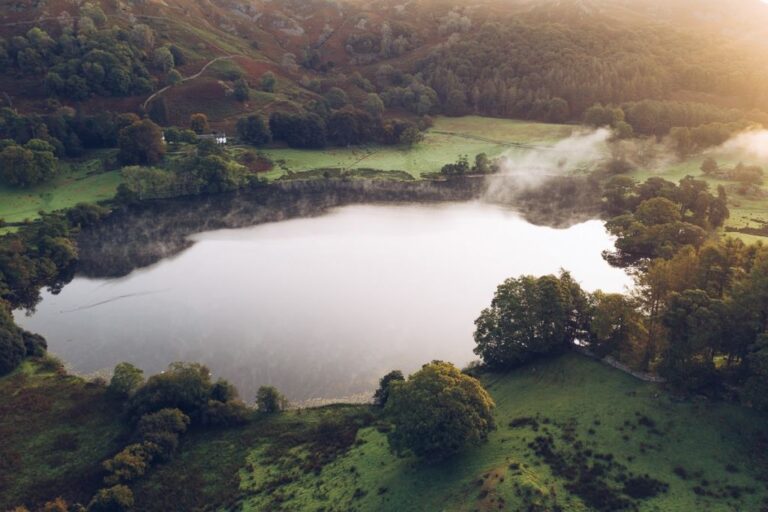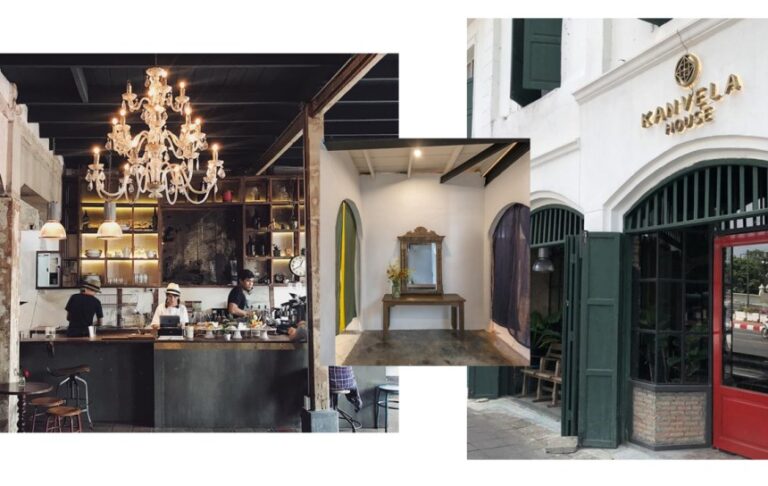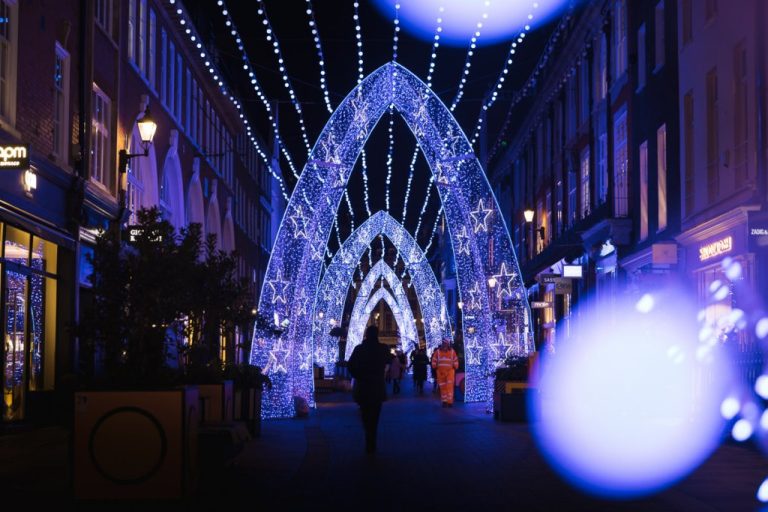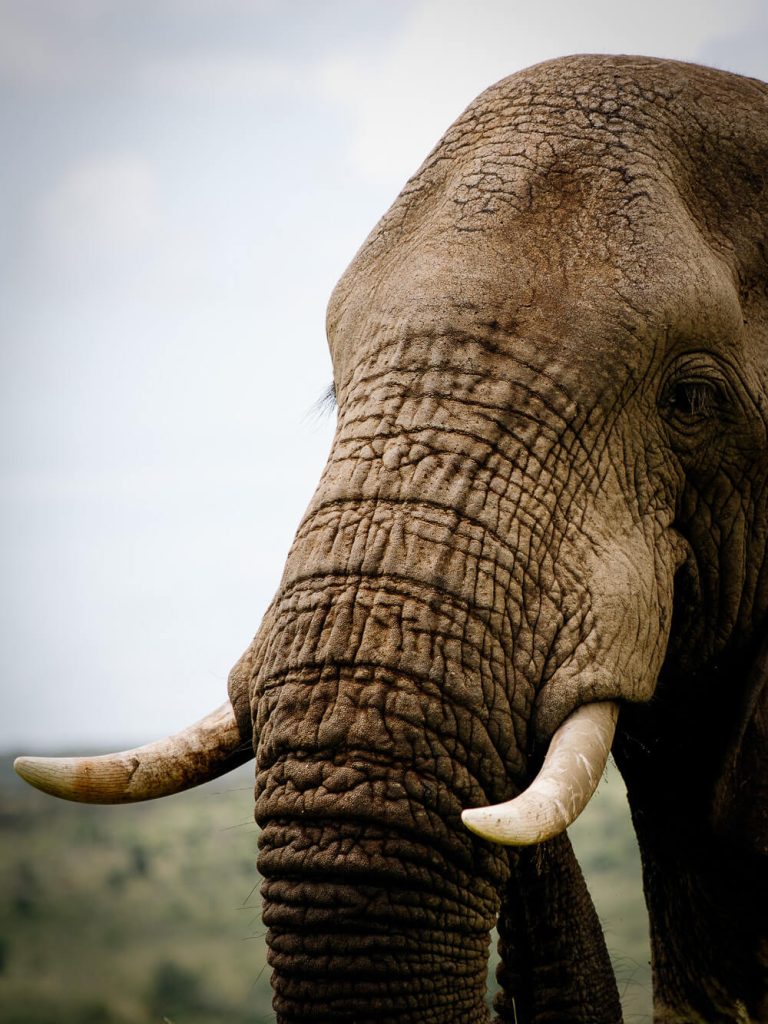I went to the Pacific Coast of Colombia principally because it is one of the rainiest places on Earth. Being such a lover of rain, I was thrilled to find it’s just rain, rain, rain all day! If you are also a fan of rain, you may be just as excited to make it here.
Okay, I’m not being entirely serious. I actually had no idea it would rain so much on Colombia’s Pacific coast. Turns out it’s somewhere in the top 10 for most precipitation anywhere on Earth.
While I did have one gloriously sunny day, for the most part it was cloudy and decidedly, confidently wet. Being so persistently damp and drippy most of the time, my backpack soon began to smell of wet dog — and it was a struggle just to get my laundry to dry.
But if I had known this, perhaps I’d have missed out on what was possibly my best experience in all of Colombia.
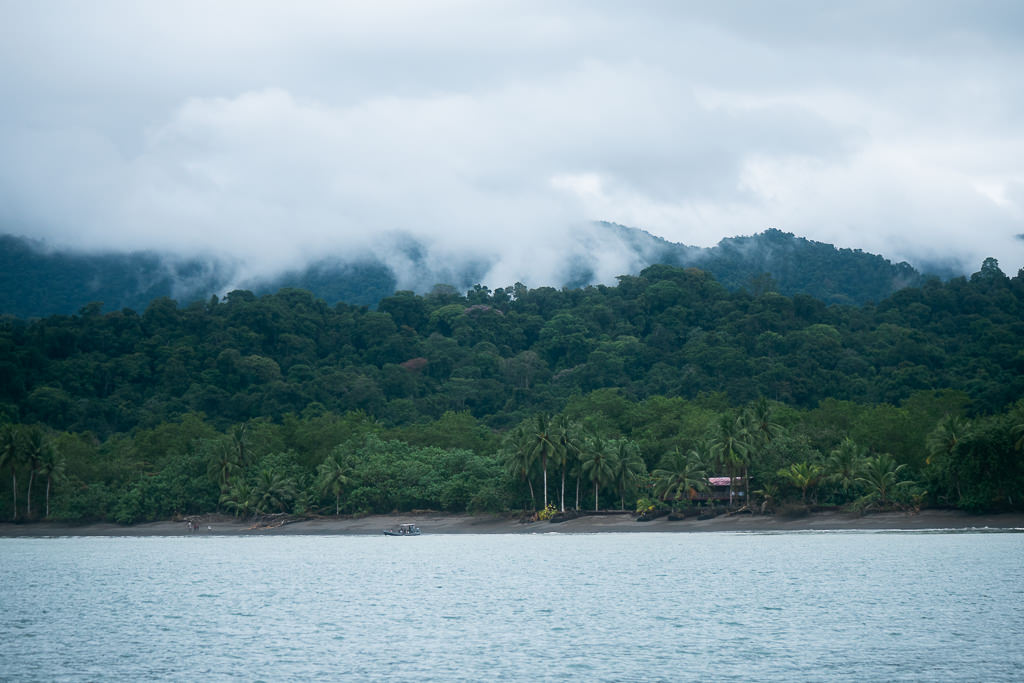
If you want turquoise waters and sunny holiday vibes, definitely go to the Caribbean coast. Cartagena will be your jam. If you want to go somewhere remote, untamed, and bursting with awe-inspiring nature, then you have to go to Colombia’s Pacific coast.
Forget about the weather reports and just go. Because this is the truly-wild-coast. It’s where “rainforest” is given new meaning. And it’s where you can have your time in paradise whenever the sun does elbow its way in.
It’s also where, from July to mid-October, you can see these glorious beasts breaching all over the coast:
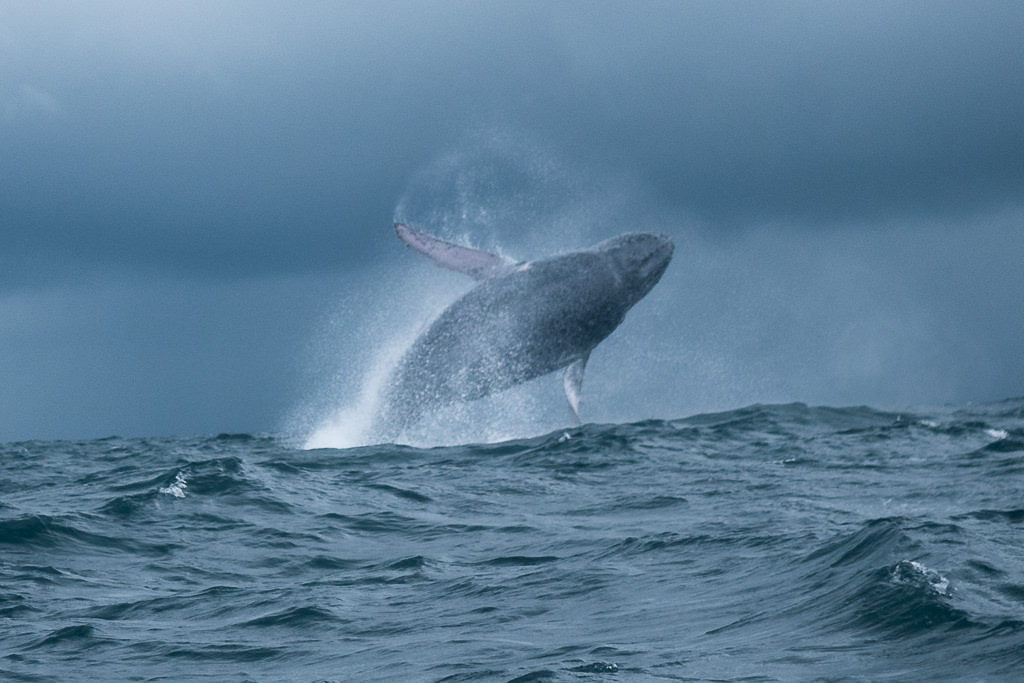
Alright, do I have your attention?
Then let’s dig in.
Where to go on the Pacific coast
First, let’s get our bearings. It’s a bit tricky to discuss Colombia’s Pacific coast because there are many names you could use. (I wasn’t actually sure which place name to put in the title of this article, so I put in several.)
I could say it’s the Pacific Coast of Colombia, or that it’s the Chocó region, or that it’s in- or near Utría National Park, which is its most protected area.
Zooming in a bit, I might mention that I went to the town of Bahía Solano — except, I didn’t really stay in Bahía Solano, but a beach called Playa Almejal near the village of El Valle that’s 45 minutes south of it. (Yet everyone still refers to it as Bahía Solano.) And then there are several other places entirely where you can experience the coast of Chocó.
Phew! Still with me here?
Actually, all you really need to know is that along the Pacific coast there are several remote villages where some small-scale ecotourism has sprouted and where you can stay in simple guesthouses, hostels, and ecolodges.
Of these villages, Bahía Solano and Nuqui are the two most commonly visited due to being safe and also more accessible thanks to having small airports.
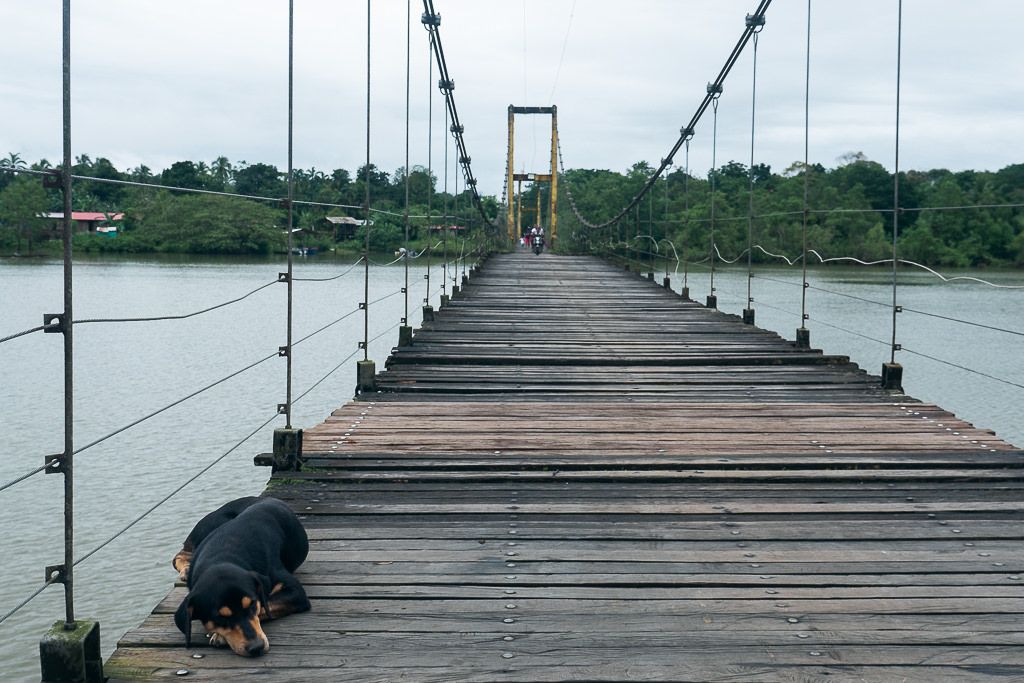
Because flights to Nuqui were sold out at the time, I went to Bahía Solano. This automatically settled the matter of where I should go, but it turned out that in terms of the major sightseeing, Nuqui and Bahía Solano will give you roughly the same experience.
The former is located to the south of Utría National Park and the latter to the north; boat trips will take you to the same places between them. Other details may be different between the villages, but I can say that I loved my stay in El Valle near Bahía Solano.
There is a third place in a wild part of Chocó that also receives a trickle of visitors: Bahía Málaga. For what it’s worth, I should mention it’s an area reputed for its narcotrafficking (Buenaventura being the main port for smugglers). Some backpackers do make it out there, but it’s a bit on the frontier of tourism and there are security concerns to be aware of.
Both Bahía Solano and Nuqui are considered safe and I felt that El Valle was among the safest places I’ve been in Colombia.
Activities in Bahía Solano
Go whale watching
Thousands of migrating humpback whales arrive on the coast of Choco beginning in July and typically stay there until November.
During my stay in July, whales were truly everywhere. They were hanging out in the open sea but also very close to shore. You could sometimes even see them breaching from the beach.
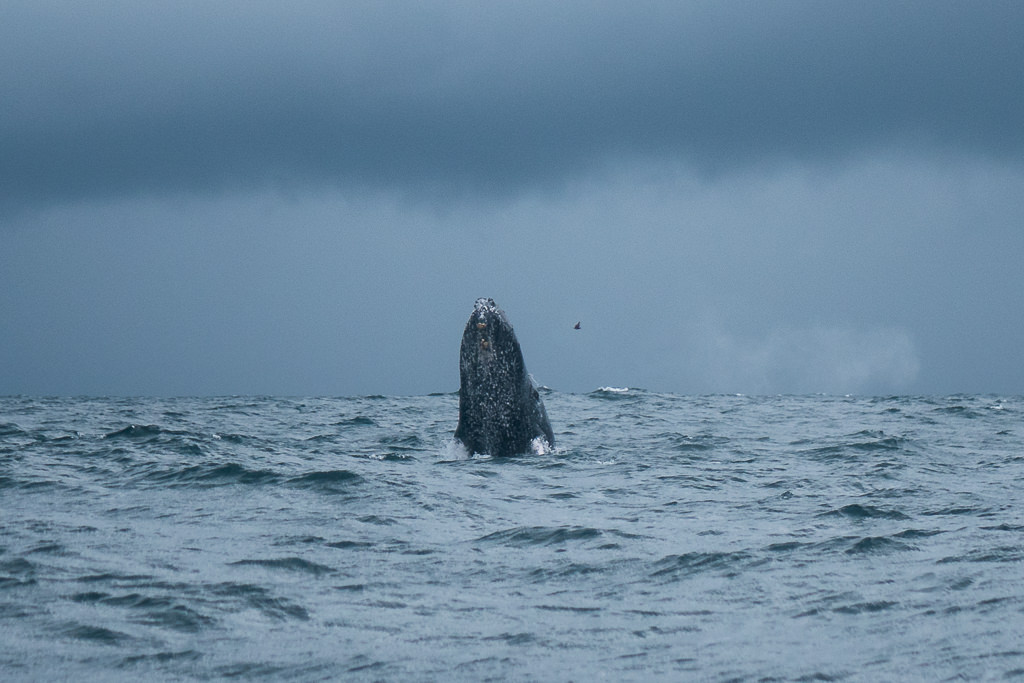
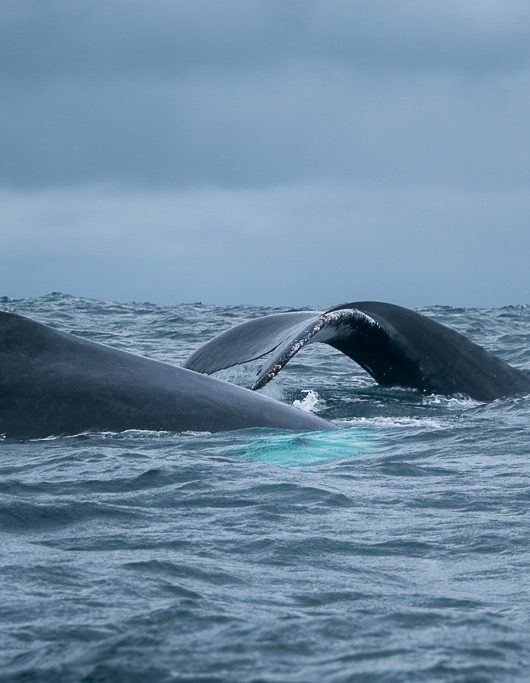
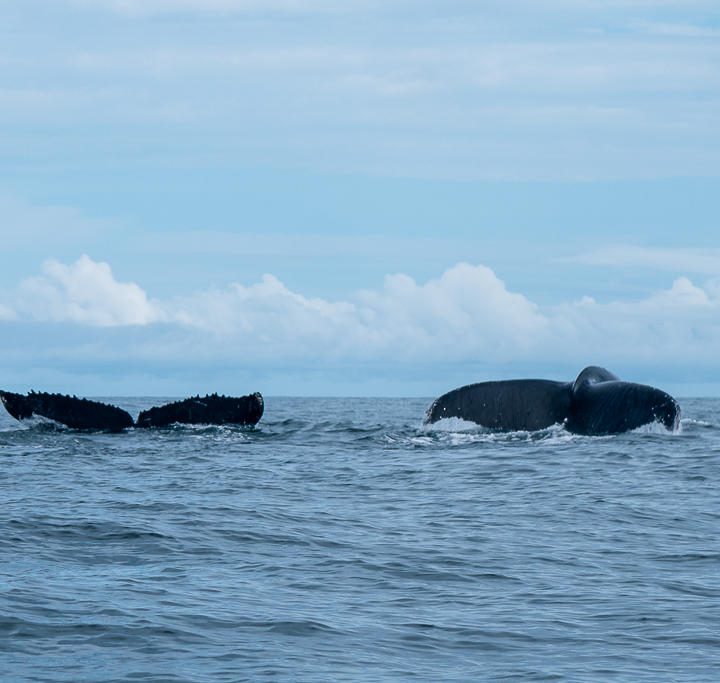
It took just 20 minutes before I sighted my first humpback on a whale-watching tour. They then kept appearing constantly; some swimming and showing their dorsal fins, some playfully slapping their tails on the water surface, and others even breaching and showing off their acrobatic moves.
Sure. You’ve seen it in nature documentaries. But seeing these gentle giants with your very own eyes is on another level. I was blown away by how easy it was to find them — quite unlike other whale-watching tours I’ve done in the Azores that required extraordinary patience.
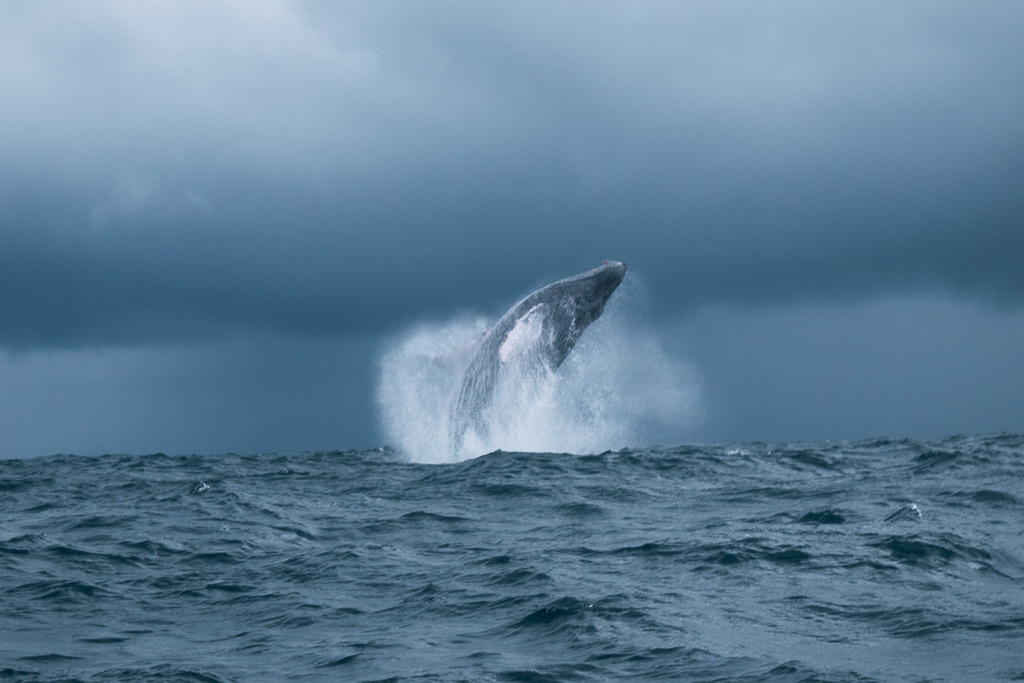
Even if you’re doing something that isn’t really a whale-watching tour but still involves a boat, then you will probably be seeing whales. Trips to beaches or waterfalls will give you the chance to easily spot them along the way.
For dedicated whale watching tours you have two options:
1. You can go with local fishermen or guides on a whale observation tour. This is a way to see the whales that is also a bit cheaper. Your captain may give some information about the whales or the landmarks along the coast, though it’ll probably be in Spanish and a bit more basic.
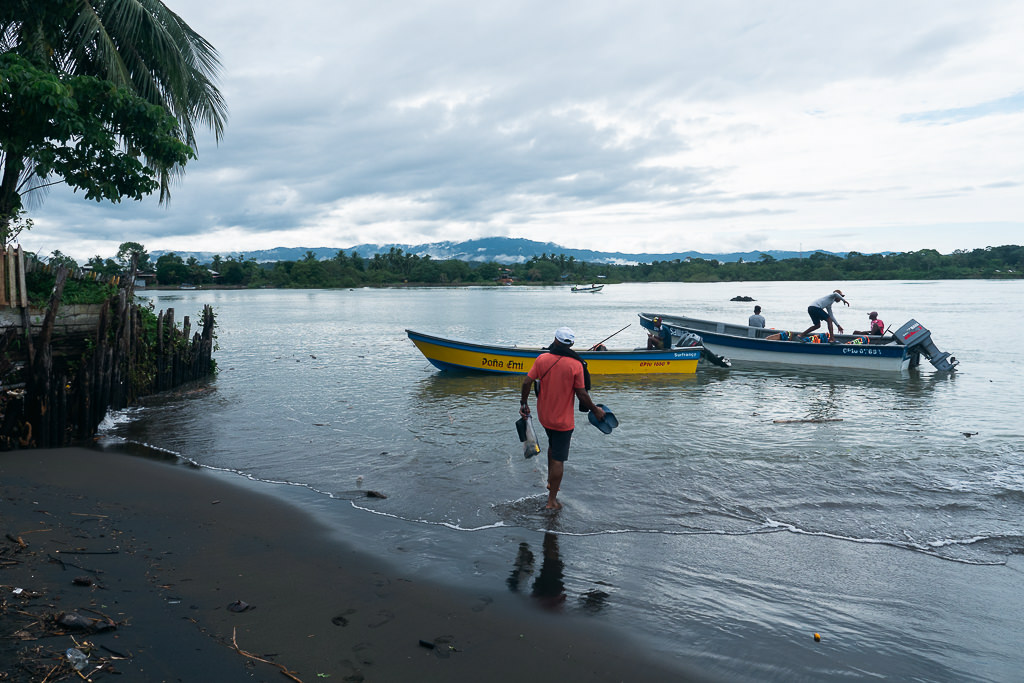
2. There are also two marine biologists who run whale-watching tours from Bahia Solano town. Thanks to their extensive work studying the whales, they can give a lot more details about their lives, behaviours, and migration patterns. They also have an underwater microphone letting you hear their song.
Their company is Madre Agua and while it costs a bit more than other tours, you also get a more polished ecotourism experience offered in Spanish or English. Their team is very passionate about the whales and fostering sustainable ecotourism, so I highly recommend them.
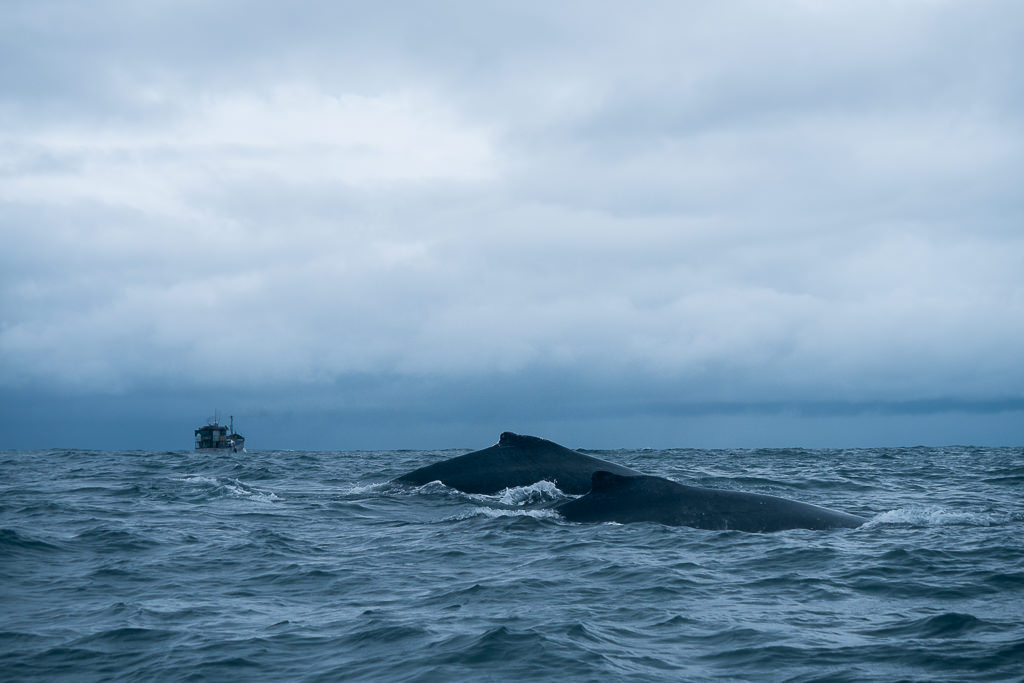
Don’t worry if the weather is poor during your whale-watching day. Rain and waves increase your chances of seeing whales breaching, as they are known to be more playful than on calm sunny days.
Visit Utría National Park
I’ve been to some nature parks where you know that theoretically there are animals around but you don’t actually see them.
Not the case here.
Approaching the Utría National Park, I saw a mobula ray and marlin fish jump right out of the water. A sea turtle also poked its head up over the surface.
On a deserted beach inside the park, there were monkeys swinging from the trees, hermit crabs scattering as you walk along the sand, and then an eagle even casually landed on a tree branch just beside where I was sitting like it was no big deal.
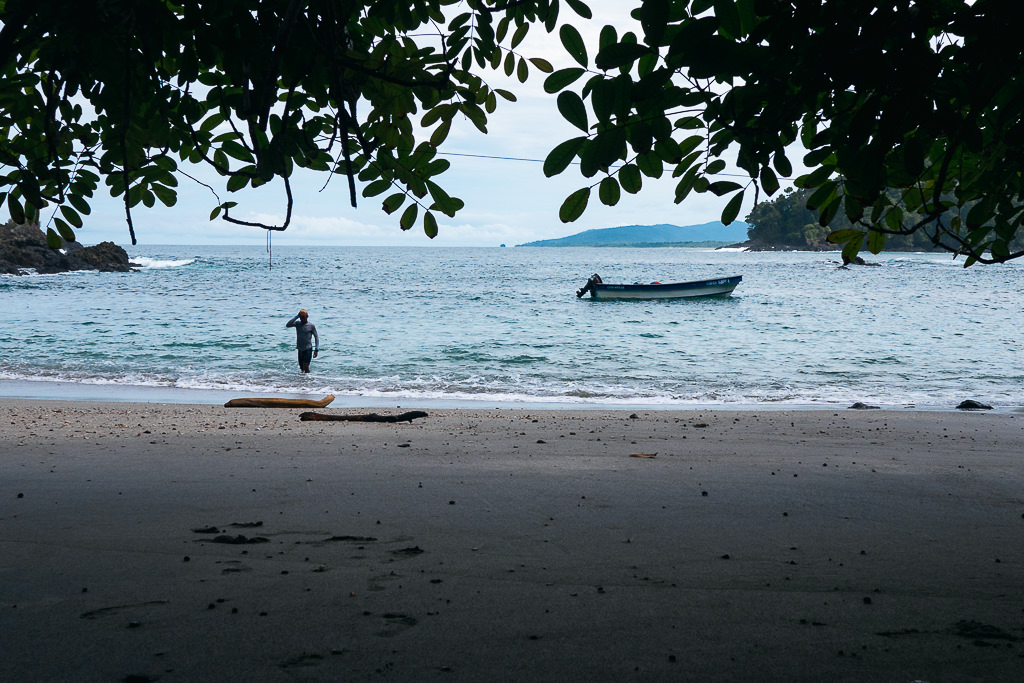

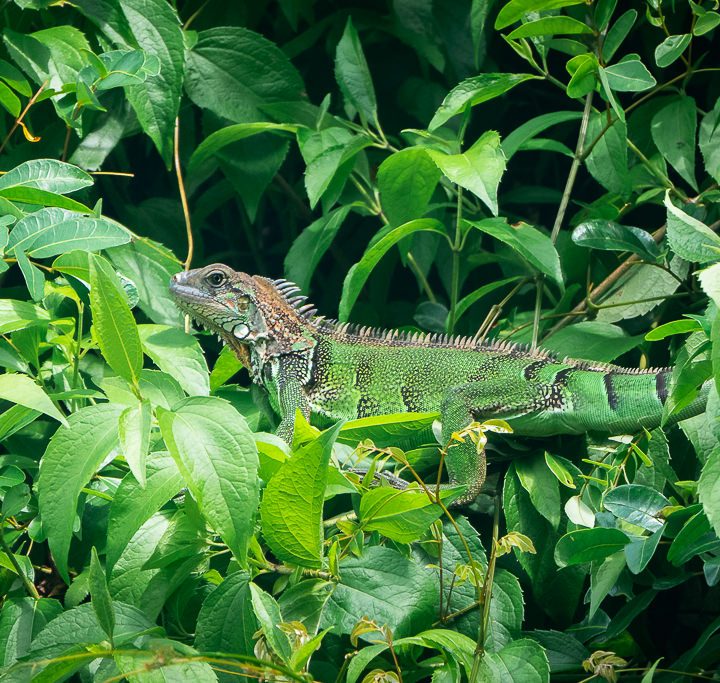
I took a guided boat tour to the beaches and coast of Utria National Park, which included lunch at Isla Playa Blanca (this is the only building inside the park). On this island, I saw an iguana hanging in the bushes and some enormous hand-sized butterflies. My guide even took me inside a small cave home to many bats.
It’s incredible how much life there is around you. It’s also possible to venture a little bit inside the mangrove forest within Utria National Park. The entrance fee is 38,000 COP for foreigners (about $9 USD) though keep in mind this will only give access to a 900-meter-long boardwalk.
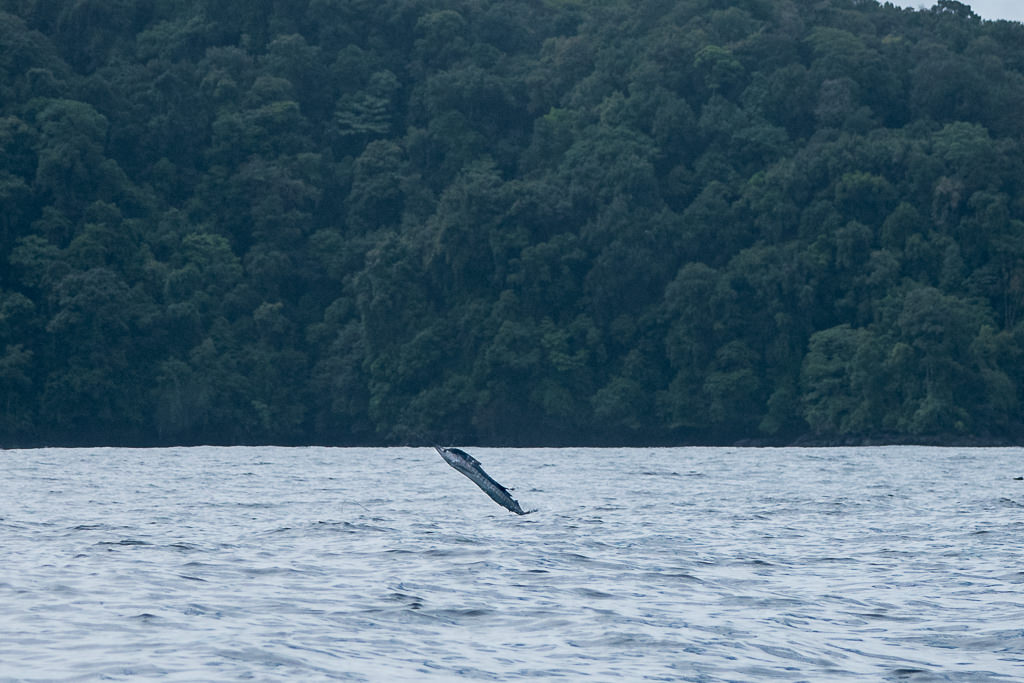
Hike through the jungles
There are a number of possibilities for hiking through the jungle interior. I hiked from Playa Almejal to the waterfall El Tigre, which took around five hours.
It is essential to do this with a qualified guide and to not attempt any independent hiking. The trails are not very clear and it would be easy to get lost on your own. (Most trails that I walked were also not visible on MAPS.me.) Our guide even had to hack and slash a way through when the high tide forced us to use an improvised path.
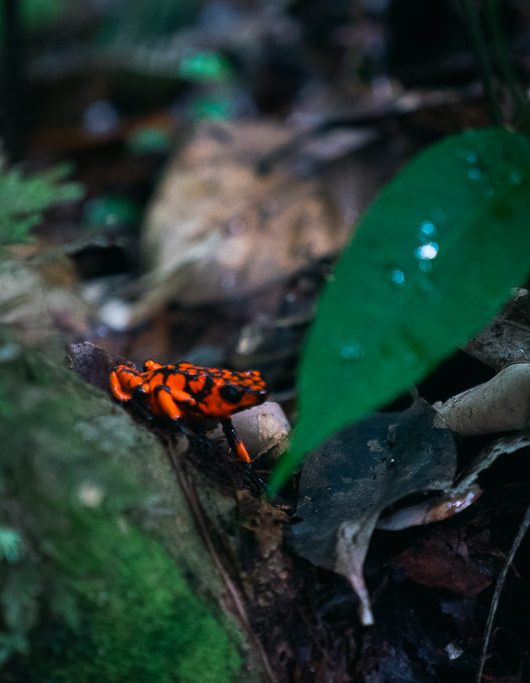
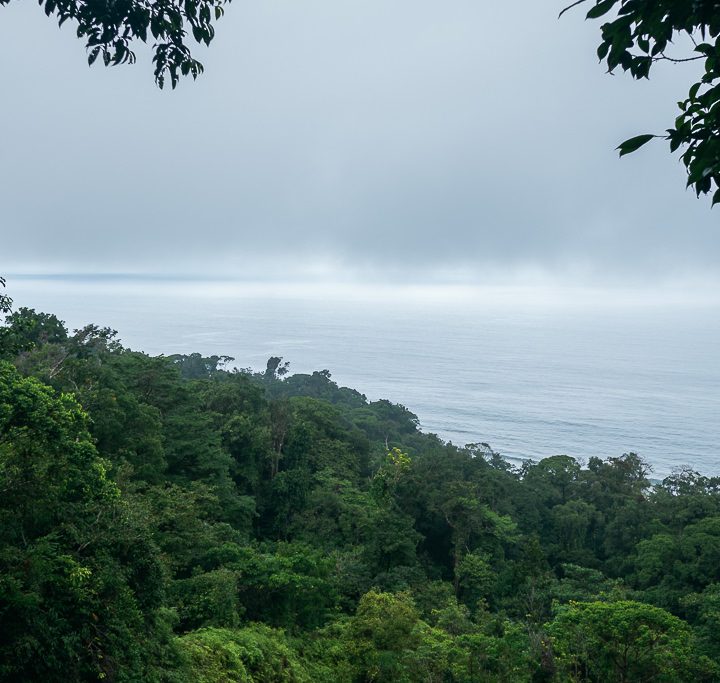
The hike was very interesting if a little claustrophobic, in a manner of speaking. It took us continuously through dense jungle with virtually no vistas along the way, providing zero context for where we were. After a few hours my mind started to get a bit loopy due to all the jungle looking the same. I began to feel a tingle of Heart of Darkness, until we finally heard the distant clattering of the El Tigre waterfall (our final destination).
While the hiking got a bit repetitive towards the end it was nevertheless a great experience. This was in large part thanks to our guide demonstrating so many interesting things along the way, such as finding edible fruits or sources of water hidden inside plants. We also spotted numerous bright yellow and red poison dart frogs along the way.
Release some baby turtles
There is a sea turtle conservancy at Playa Almejal and, if you’re lucky, they might just be releasing some newly hatched babies into the ocean during your stay.
I joined in bringing a bucketful of the little fellas to the beach and setting them free. This was exactly as adorable and feel-good as you’d hope for.

Volunteers collect eggs from the beach at night when they’re dropped, keeping them away from threats such as dogs, human poachers, and birds. Once hatched they take them from their protected pen and release them during the day.
Tourists pay a fee to observe this moment. You can think of this fee as also being a donation that helps support their efforts. The volunteers diligently check the beaches every day and release the turtles within 24 hours of hatching — and they do this whether there are any tourists around or not.
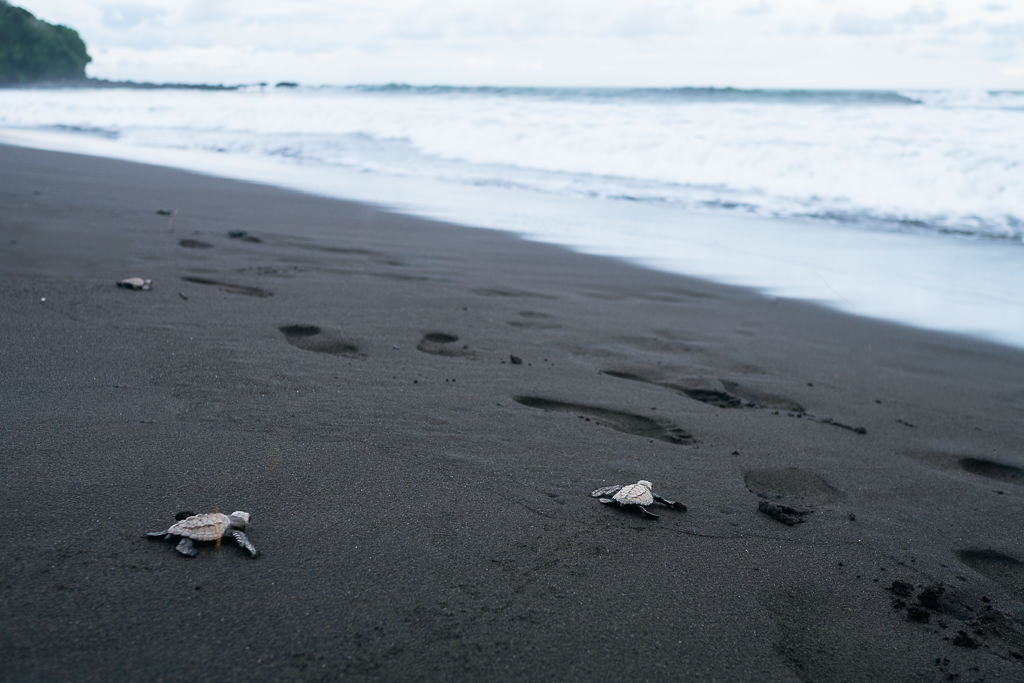
Be sure to inquire locally about any turtle hatching releases. There are also opportunities to join volunteers on their nightly searches for eggs.
Relax on El Almejal beach
All the activities around Bahia Solano may tire you out soon, but it’s easy to recharge at El Almejal beach. Just to set your expectations: the sea is quite rough and there’s a great amount of driftwood that washes up here, though the beaches are generally clean of plastics and such.
It’s a surfing spot as well, so you can rent a board and ride the waves with absolutely no competition for space.
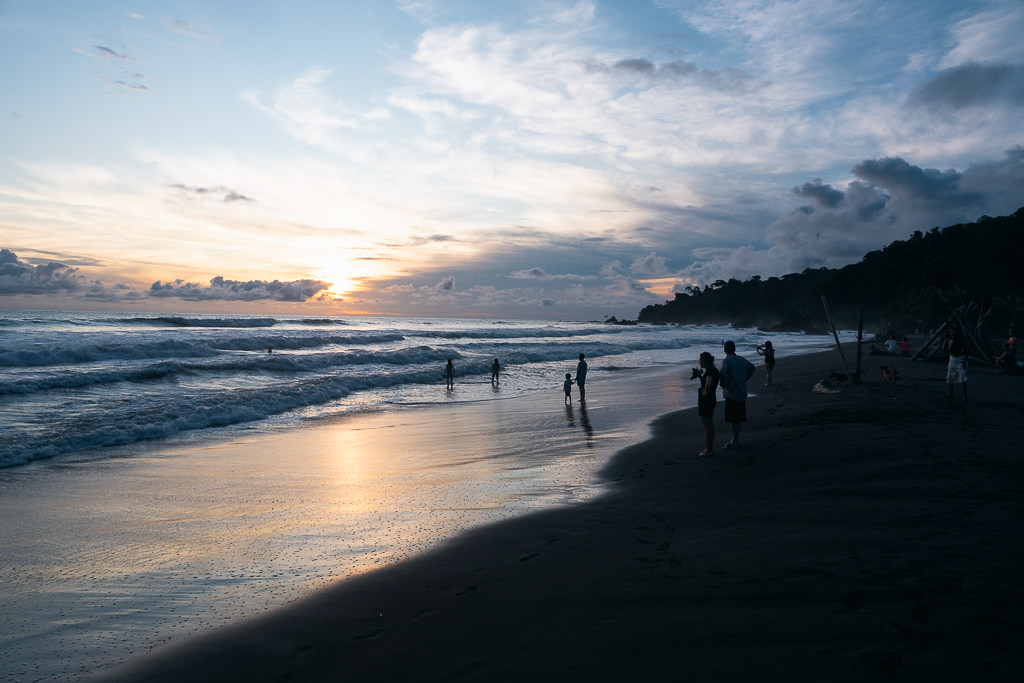
There is one restaurant on El Almejal offering set meals for lunch. While more expensive than in the Colombian interior, they are still a fantastic deal. For 20,000 pesos (about $5) you can get yourself a big tuna steak, salad, coconut rice, patacones, fresh lemonade, and yam soup. Not bad at all.
The town of El Valle is fun to stroll around as well, with a few local restaurants, and no doubt some cumbia or vallenato music with accordion emanating from some of the houses. There are many Afro-Colombian communities around the coast and it’s great just spending some time around them.
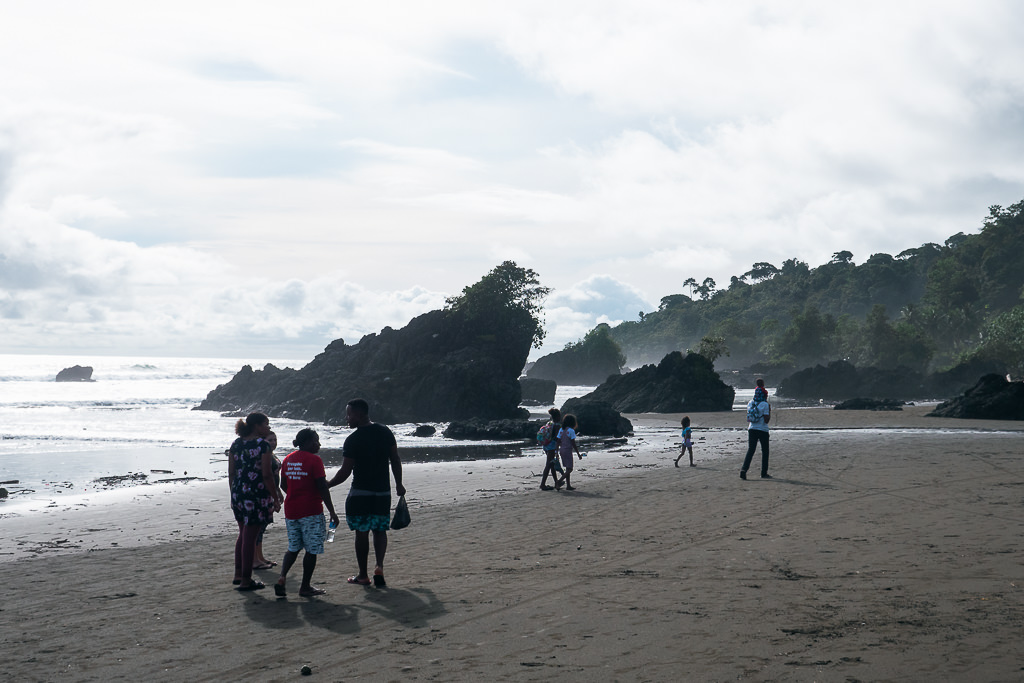
How to get there
The following info is the same for Bahia Solano or Nuqui.
By road vehicle
This is definitely the worst way to get to the Pacific coast. There are in fact no roads at all connecting it to the rest of Colombia, so you’re not gonna get there.
The furthest you can get overland is the town of Quibó. From there it’s still about 100km to the coast as the toucan flies. Unless your vehicle can plow itself through endlessly thick jungle, Quibó will be your final overland stop.
By boat
It is possible to go by boat. Some travellers who did it didn’t seem thrilled about the 10+ hours in a very rocky speedboat they had to endure. You’ll also have to go via the port of Buenaventura, which has a relatively poor safety reputation.
There is also a weekly cargo boat from Buenaventura which takes 24 hours and which could perhaps offer an interesting adventure. The price is about 150,000 pesos including food.
By plane
This is the easiest and best way. Two companies serve the airstrips on the coast with a small number of propeller planes: Satena and EasyFly. Flights depart exclusively from Medellin.
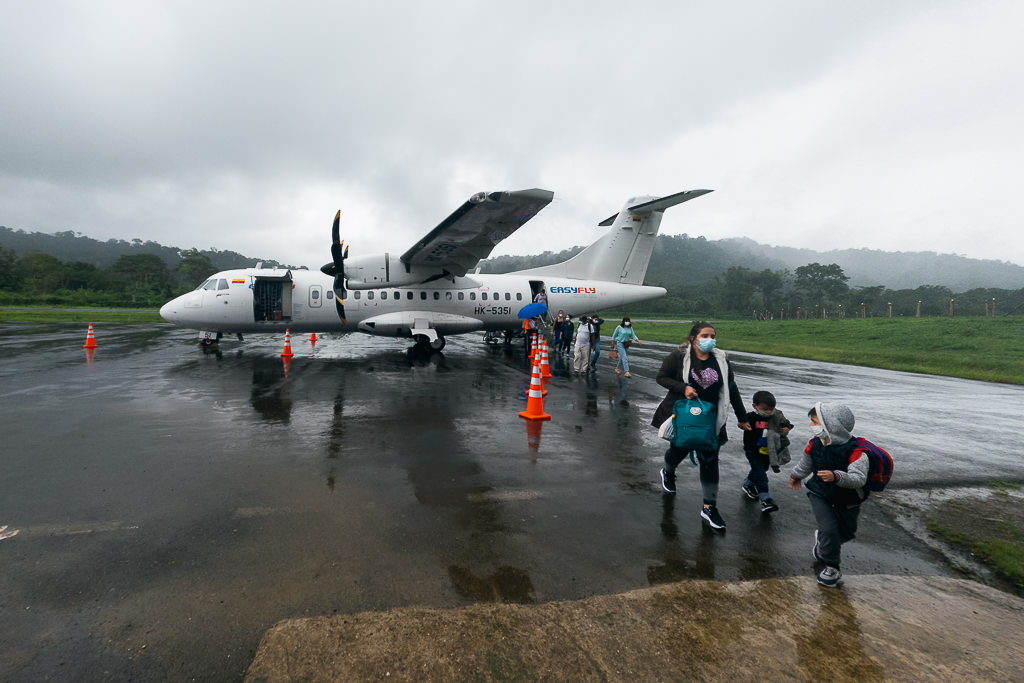
Note that flights depart from Medellin’s smaller airport (Olaya Herrera) which is inside the city and not from its swanky new big one (José Maria Córdova Airport). If you’re staying in El Poblado, it’ll be just a 5-minute taxi ride to Olaya Herrera Airport.
The flight took just under an hour. From there I caught a pickup truck to El Valle beach, which is about a 45 minutes’ drive south. Don’t worry about how to get to your accommodation, as there will be many tuk-tuk and minibus drivers already waiting for passengers as you exit the airport.
There are no ATMs in Bahia Solano or Nuqui so bring all the cash you need.
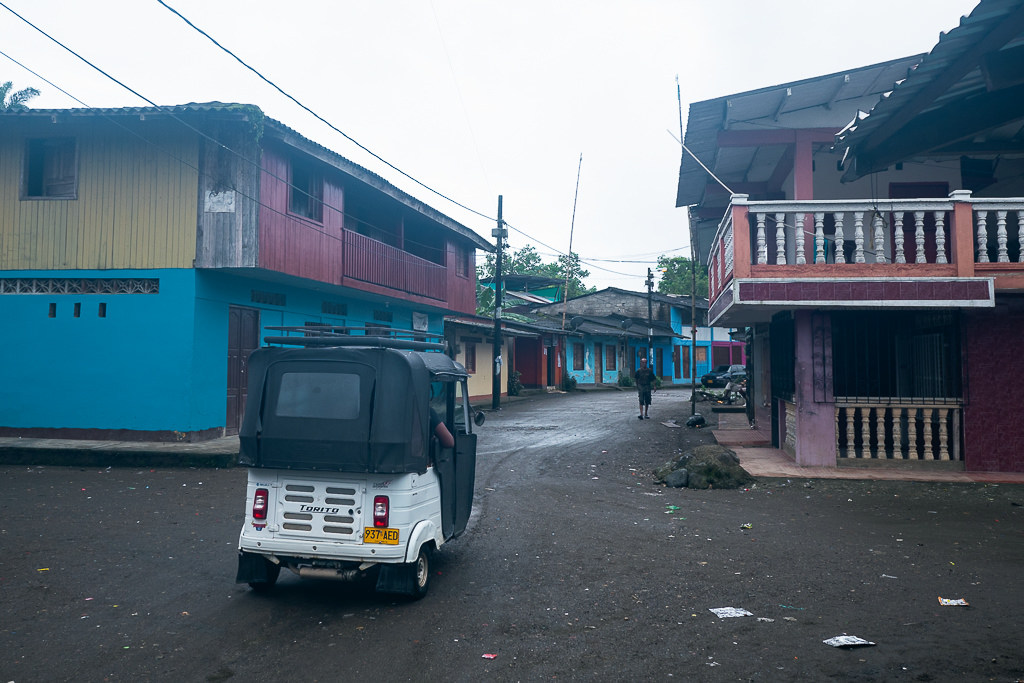
How to book EasyFly flights
Satena flights are the easiest to book online because its website accepts international credit cards. EasyFly only takes online reservations with Colombian credit cards. Luckily there is a workaround, which I haven’t seen mentioned on other blogs.
I was still able to book an EasyFly flight by contacting the company directly through WhatsApp. They were able to send me a special link where I could still pay using my European credit card. This manual booking process took almost an hour, so it wasn’t ideal, but since EasyFly was my only option on my dates, I was grateful to still get my ticket this way.
Where to stay in Bahía Solano
It’s possible to stay in the town of Bahía Solano itself. It’s not a very remarkable town, but it does have a few higher-quality hotels. Personally, I quite enjoyed staying at Playa Almejal, next to the village El Valle, south of Bahia Solano.
Backpacker accommodation
I stayed at the Utria Hostel. I highly recommend it if you’re looking for a budget option that has dorms as well as private rooms. It has a good atmosphere with a lounge deck upstairs and a small bar downstairs, though the facilities are a bit basic (think tree hut style). There is a kitchen you can use; you’ll be told to put your food in some tupperware or else the parrots will steal it (amazing). You can check availability at Utria Hostel here.
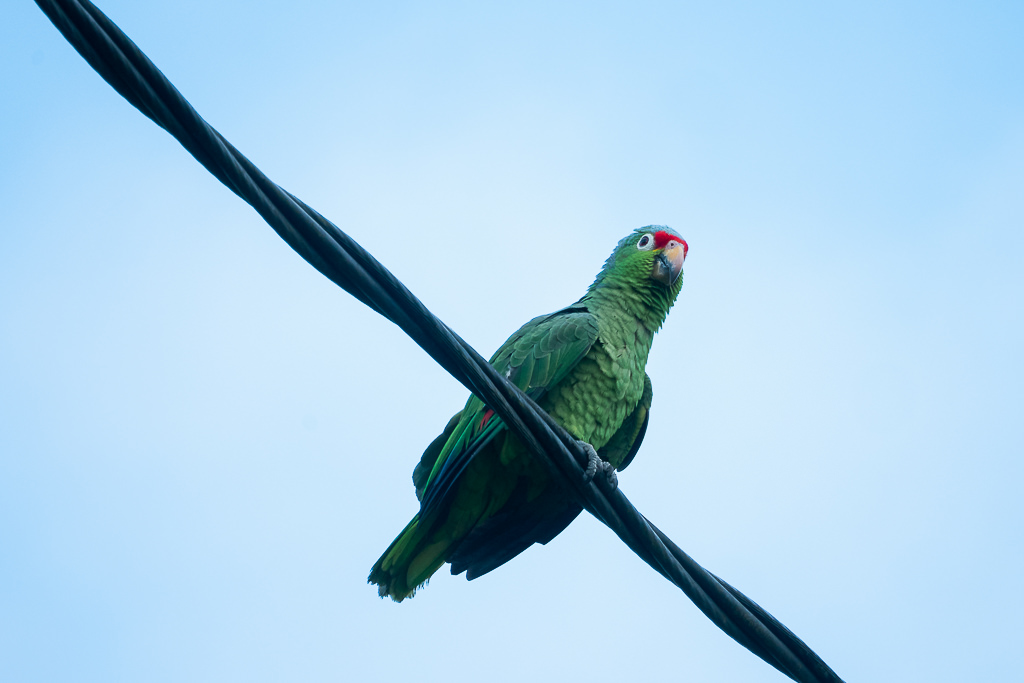
The nearby Humpback Turtle Hostel is often recommended but during my visit the owners had left unpaid volunteers in charge of running it, which is always a bad idea. The quality of service took enough of a nosedive for some guests to check out early and move to Utria Hostel. Perhaps when the owners return it will be great again, but I advise checking some recent reviews to be sure.
Mid-budget ecolodges
Posada Don Aí has eight bungalows on stilts as well as private rooms with sea views, including family rooms for up to 4 guests. It’s a place surrounded by nature and right on the beach. The on-site restaurant is fantastic (I went to eat there almost every day). You can book it only at Booking.com.
Los Longos is a lovely wooden guesthouse at the far end of Playa Almejal. The palm-fringed rocky coast around here is among the most scenic. The property has a jungle hut feeling but with higher standards than the hostels. There’s only one room so you share the house (but not your floor) with the owners, so you can expect a high level of local hospitality. Reserve it at Booking.com.
Higher-end hotels
There isn’t any true ‘luxury’ accommodation in or around Bahia Solano. Keep in mind that the Pacific coast is very remote and only supplied by a cargo boat once a week. But some good hotels do exist.
Hotel Costa Chocó is my recommendation, featuring spacious rooms, a big pool, and a large lounge and garden. Since my whale-watching tour departed from Hotel Costa Chocó, I was able to spend some time here and could tell that it’s the nicest hotel in the area. You can book at Booking, Expedia, or Hotels.com.
How many days
If you go during whale season and you’re excited by what I’ve written here, make sure your stay isn’t too short.
I had 4 nights booked, but if I’d had been able to move the date of my return flight, I may well have extended it. I think 4 nights or more is a good recommendation — and definitely not any less than 3 nights.
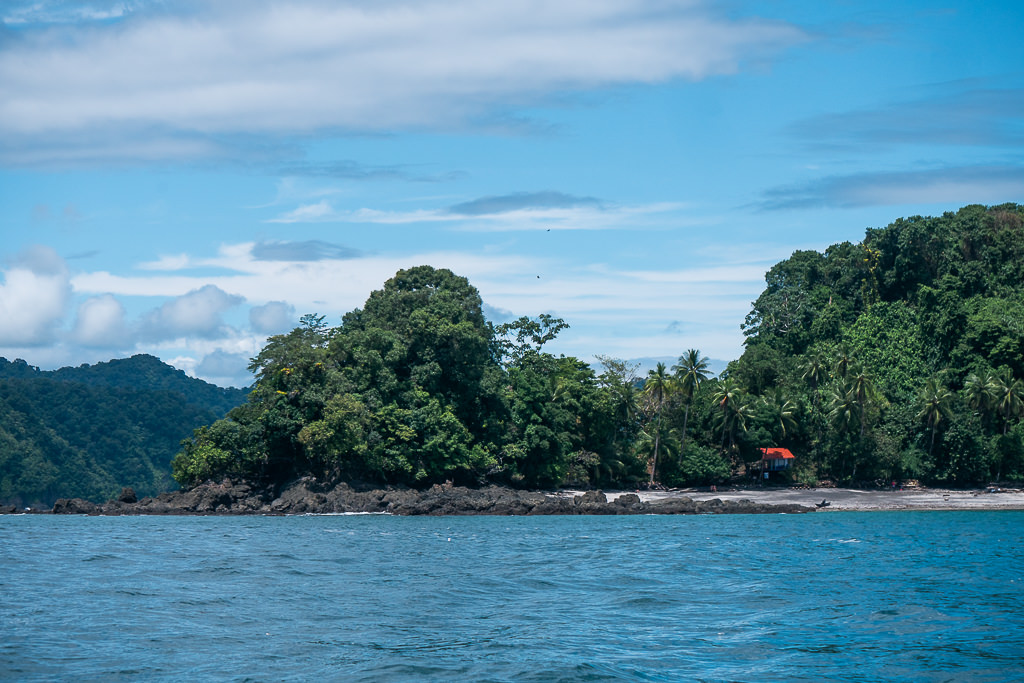
Every day was filled with new activities and by the time I left, I hadn’t done everything yet. If you also want to spend some extra time wandering the beaches or if you surf, then it’s worth allocating a few extra days.
A place this wild and unspoiled is quite a rare treat so it’s nice to savour it.
The best time to go
The best time to go to Bahia Solano is clearly when the whales are also there, which is from June to November. They may not quite have arrived by June yet though, so if you want to be more sure of whales, aim for at least mid-July.
Outside of whale season, I’d say it’ll still be worth visiting. Of course, it will be a bit less spectacular, but there are still many things to experience besides the whales.
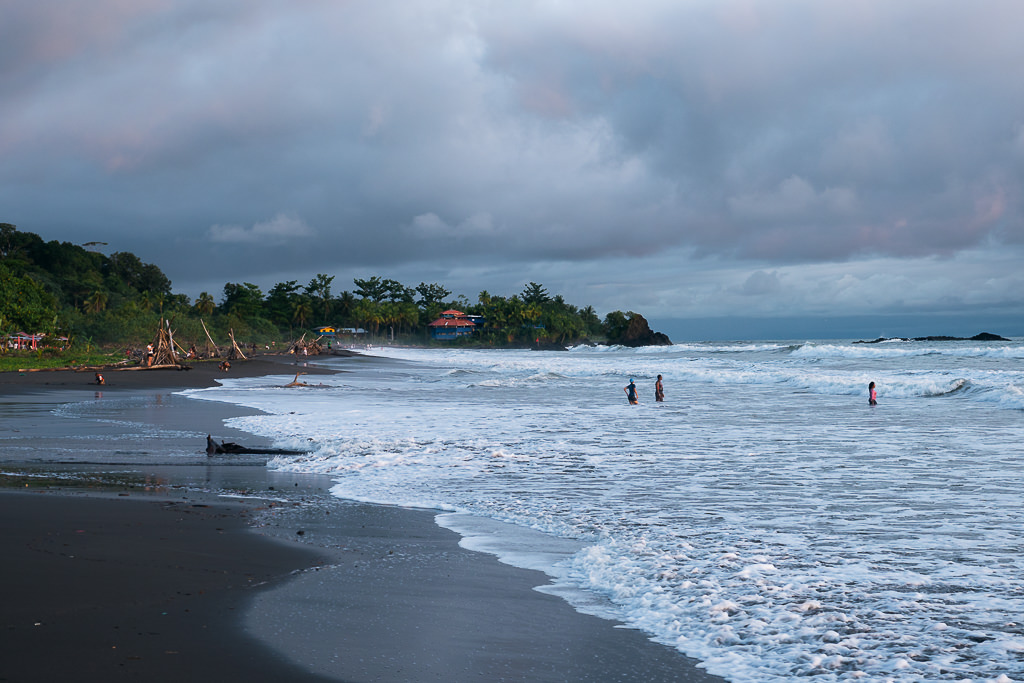
As far as the weather goes, it doesn’t really matter when you go. Choco receives some of the most precipitation in the world and there isn’t a truly dry season. Relatively speaking, it is quite a bit drier and clearer from January to March, though even during this time there is a 60% average daily chance of precipitation.
No matter, though. It’s such an amazing place you won’t even care about the weather. The water and air temperature are fortunately quite warm, making it a lot less annoying to deal through some rainfall. Just be sure to pack a poncho and a rain cover for your daypack.
Some links may be affiliate links, meaning I may earn commission from products or services I recommend. For more, see site policies.
Posted AUG 22, 2022 (Updated Sep 01, 2022)
